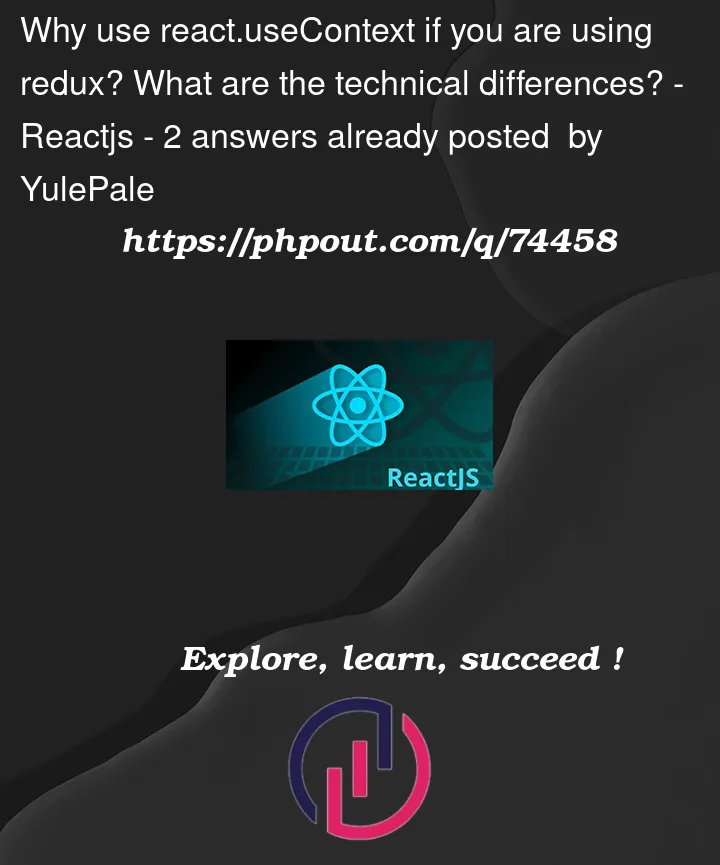Why use react.useContext if you are already using redux?
I am trying hard to understand what benefit react.useContext offers over redux. Is there something I am missing?
I am trying to deeper understand react.useContext and redux. So please explain why one is technically more suited for certain situation than the other. What are the technical differences?




2
Answers
React’s
useContexthook and Redux are both state management tools, but they are designed to handle different needs in a React app.Redux is a centralized store that can hold the entire state of an application, and its actions and reducers manage updates to the state. It’s useful when you have complex or large state management needs, and you want to maintain a single source of truth for your state.
On the other hand,
useContexthook is a simpler alternative to Redux, especially when your state needs are small or local. It provides a way to pass data from a parent component to its children components without having to pass the data down as props through every level. This can make your code more readable and maintainable.In summary, you can use either
useContextor Redux depending on the complexity and size of your state management needs. If you have simple state needs, you can useuseContext, but if your state needs are more complex or large, you can use Redux to manage it more effectively.Context and Redux do two different things.
Context is a mechanism to pass a single, seldom-changing variable down the tree. Whenever that variable is changed, all consumers rerender, so it is best used to pass down things like a Theme, or a WebSocket connection used in many components. It’s more useful for dependency injection.
Redux on the other hand is made for managing plain objects (e.g. a WebSocket wouldn’t go in here) holding data and subscribing efficiently to granular changes within that data.
So it is likely you will use Context and a state mgmt library (there are also alternatives like MobX, Recoil, XState, Jotai, Zustand or Valtio) side-by-side, for different purposes. For more information, you can for example read this article.